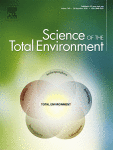Ver ítem
- xmlui.general.dspace_homeCentros e Institutos de InvestigaciónCIAP. Centro de Investigaciones AgropecuariasInstituto de Investigación Animal del Chaco SemiáridoArtículos científicosxmlui.ArtifactBrowser.ItemViewer.trail
- Inicio
- Centros e Institutos de Investigación
- CIAP. Centro de Investigaciones Agropecuarias
- Instituto de Investigación Animal del Chaco Semiárido
- Artículos científicos
- Ver ítem
Beyond pastures, look at plastic: Using Sentinel-2 imagery to map silage bags to improve understanding of cattle intensity
Resumen
Cattle ranching has increased globally in the last decades, and although pasture expansion is well documented across different regions, there is little understanding of the intensity at which cattle operate in these areas. With freely available Sentinel-2 satellite imagery, we mapped for the first time polyethylene silage bags used for forage conservation in a year with the Random Forest algorithm, and proposed them as a spatial indicator of cattle
[ver mas...]
Cattle ranching has increased globally in the last decades, and although pasture expansion is well documented across different regions, there is little understanding of the intensity at which cattle operate in these areas. With freely available Sentinel-2 satellite imagery, we mapped for the first time polyethylene silage bags used for forage conservation in a year with the Random Forest algorithm, and proposed them as a spatial indicator of cattle intensity. For this, we combined monthly silage area with land cover and climatic variables in a regression framework to understand cattle intensity metrics at regional and farm scales throughout 20 million hectares in the Dry Chaco. In addition, we explored the impact of using maize silage supplementation on productive and environmental metrics at the farm scale in a precipitation gradient. We validated our models using a spatially explicit database of cattle distribution. Our results highlight that silage bags are accurate mappable objects with Sentinel-2, which can contribute to the understanding of cattle density, and heifer and steer density in pasture contexts at farm and regional scales. Finally, our whole-farm simulations support the idea that incorporating silage supplementation in cattle ranching regional analyses conducts to significant differences on environmental or productive estimations, which should be considered. The amount of stored forage that is used in supplementation has strong implications for the performance of cattle ranching, but remains difficult to quantify at the regional level with remote sensing. Silage bag mapping is thus an opportunity to improve the overall understanding of livestock intensification and its productive and environmental impacts, particularly in highly seasonal rangelands. Following this metric could be a valuable indicator of the cattle ranching performance in terms of it resilience, production increase and impacts over natural ecosystems (related to Sustainable Development Goal 2-zero hunger and also in the 15-life on land).
[Cerrar]

Autor
Fernandez, Pedro David;
Gärtner, Phillipp;
Nasca, Jose Andres;
Rojas, Tobias;
Gasparri, Nestor Ignacio;
Fuente
Science of the Total Environment 855 : 158390 (10 January 2023)
Fecha
2023-01-10
Editorial
Elsevier
ISSN
0048-9697
1879-1026 (online)
1879-1026 (online)
Formato
pdf
Tipo de documento
artículo
Palabras Claves
Derechos de acceso
Restringido
 Excepto donde se diga explicitamente, este item se publica bajo la siguiente descripción: Creative Commons Attribution-NonCommercial-ShareAlike 2.5 Unported (CC BY-NC-SA 2.5)
Excepto donde se diga explicitamente, este item se publica bajo la siguiente descripción: Creative Commons Attribution-NonCommercial-ShareAlike 2.5 Unported (CC BY-NC-SA 2.5)

